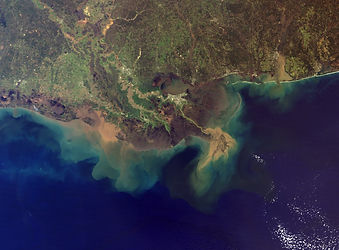McAnally
& Associates
consulting services for water resources engineering
Sedimentation Engineering
Sedimentation Engineering is the application of science and technology to prevent or solve waterborne sediment problems from streams to the ocean caused by unwanted sediment accumulation, excessive erosion, or concentration of sediments. Our Sedimentation Engineering Projects include:
Port Sedimentation Solutions
We devised solutions to sediment problems in ports of the Tennessee-Tombigbee Waterway. Sediment flows into the waterway via local streams. Some of the deposited sediment is then resuspended by currents and vessel propwash resulting in sediment accumulations in port facilities. Based on field investigations and model results from HEC-2 and the USACE SAM sediment toolkit, we produced and recommended a set of designs to reduce or eliminate maintenance dredging in the ports of this inland waterway.
Navigation Channel Sedimentation
We performed and reviewed field, laboratory and hydrodynamic and sediment transport model investigations of sediment deposition and its effects on navigation and flooding in the Atchafalaya Bay in Louisiana and recommended improved management measures. The basin, which consists of river channels, abandoned bendways, lakes, and a bay, receives a third of the flow of the Mississippi and Red River systems. We developed methods for examining sedimentation under normal and extreme events (floods and hurricanes), predicted sedimentation and basin infilling over 50 years, and identified needed management measures.
Fluid Mud Investigations
Fluid mud is a high concentration sediment suspension that exhibits both fluid-like and mud-like characteristics. Accumulations on the bottom of lakes, streams, estuaries, and coastal areas may damage benthic habitat and impede navigation. Fluid mud generates spurious echoes in acoustic fathometers, making waterborne navigation hazardous. We have engaged in studies to measure and manage fluid mud for more than 20 years and led two task forces to define the state of knowledge on fluid mud phenomena, publishing three journal papers on the subject.

Control structures such as these training dikes trap sediment and concentrate river flows to scour a channel.

The Mississippi River collects sediment eroded from a vast swath of North America and carries it to the Gulf of Mexico.